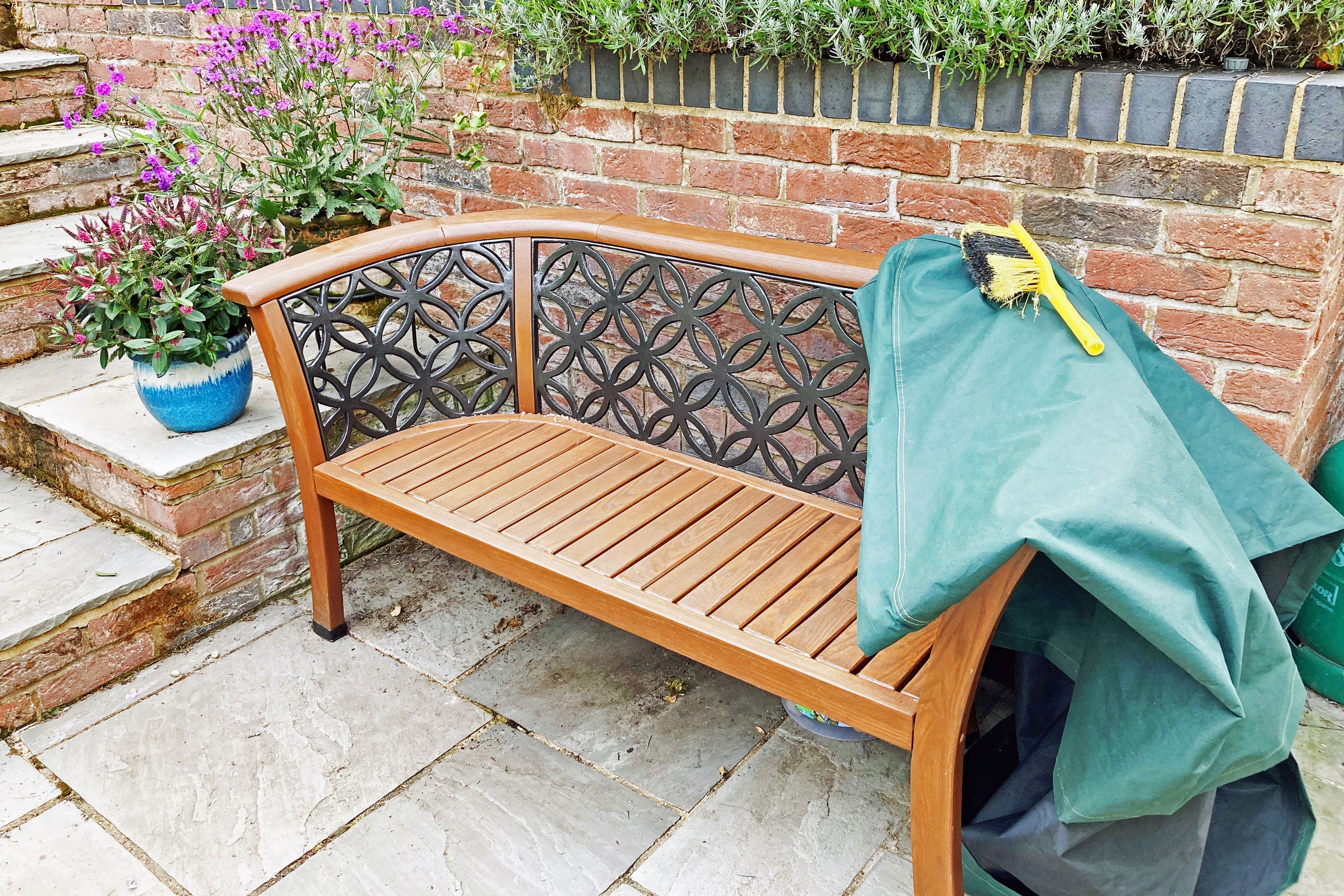Do I need to treat my garden furniture before storing it for winter?
Wood, metal and rattan all need looking after, but some more than others, discovers Hannah Stephenson.

Many of us will now be thinking about putting away our garden seating and storing our cushions for winter.
But should we be giving wooden furniture a treatment, and are we able to leave weather-resistant metal and rattan items outdoors without danger of them perishing in the cooler months? Specific types of garden furniture may require different maintenance.
Metal
Before storing aluminium furniture away at the end of the season, remove seat and scatter cushions and store separately. Remove general surface dirt using warm soapy water, and rinse using a hose and non-abrasive sponge, advises Tim Pennell, head of sales at luxury garden furniture brand Bramblecrest.
“In coastal environments (where there is usually a high concentration of abrasive salt in the atmosphere) aluminium furniture should be washed down with fresh water and covered when not in use.
“If a set has become scratched, use touch-up paint to protect the framework, allowing it to dry completely before storing away under cover.”
Dobbies Garden Centres senior buyer Lynsey Abbott advises on other metal furniture: “Before you pack away your metal furniture for winter, make sure it’s completely dry. Also make sure you store your metal furniture in a dry, sheltered area such as a garage or shed to prevent any moisture seeping in and causing rust.”
Wood
Hardwoods, such as teak, acacia and eucalyptus, are tougher than softwoods such as pine.
Pennell advises gardeners with teak furniture, which is resistant to moisture and fungal rot, to remove general surface dirt using warm soapy water and a stiff brush, rinsing off with a hose. To remove stubborn stains, use fine sandpaper when dry. Sand with, not against, the grain.
Be aware that when left untreated outdoors, the teak will gradually mellow to a light silver/grey colour and become rougher to the touch as the surface grain lifts. Small cracks can also appear as teak adjusts to its new environment, but it won’t affect its structural integrity.
Good-quality teak should last for years without any intervention, Pennell says. Do not cover teak furniture or use teak oil which can make the furniture turn black, sticky and patchy, he advises.
Oak
Simon Burvill, founder of oak garden furniture specialist Gaze Burvill, says: “If you are leaving your furniture outside but covering it over, either with purpose-made covers or wrapping it up in a tarpaulin, make sure it is clean and bone-dry before you cover it up. Make sure there is ventilation for air to circulate so that if moisture gets in it can also more easily get out on a dry day.
“Fortunately, oak is a very resilient material for the outdoors and doesn’t need to be treated to last over autumn and winter like other materials, such as softwoods.
“Remove any dirt, moss, lichen and bird droppings as these all retain moisture which, when left over time, can cause issues such as rot.
“This is especially pertinent for any pieces of furniture positioned in shady areas which are typically cooler and more damp. When cleaning your outdoor furniture, use a stiff, but not metal, brush, warm water and a pH-neutral detergent. For more stubborn dirt, we recommend using sugar soap or a wood cleaning solution.”
If the furniture is in constant contact with grass or soil, place a piece of slate or quarry tile under each foot, or move the furniture to a different surface in the garden, such as a paved terrace or balcony, he suggests.
Softwood
Softwood garden furniture is often made from pine, spruce or fir and is frequently cheaper than hardwood furniture. Buy it pressure-treated, but know that you’ll still need to wash down surfaces and allow them to dry before applying a wood stain or paint containing preservative in dry weather, before covering it or storing it in a garage over the winter, says the RHS.
Rattan
Synthetic rattan furniture (natural rattan will not withstand the outdoor elements for long) is typically a very low-maintenance material, Abbott says, but give it a thorough cleaning before storing over winter.
“Due to rattan’s woven nature, you might find that vacuuming the seats is more effective than simply wiping them down, and you should aim to remove all dirt and mildew from the furniture before packing it away.
“Ideally, store your rattan furniture indoors in a garage or shed, or if this isn’t an option and it needs to stay outdoors, make sure it’s properly covered.”
Use a non-abrasive sponge and lukewarm, detergent-free soapy water when washing rattan, Pennell adds.
Avoid jet-washing your furniture as this can result in damage to surface areas, he adds. Rinse with fresh water and allow to dry prior to covering or storing indoors.
Cushions
Clean removable cushion covers and use lukewarm water to wash by hand, then dry them thoroughly. Don’t machine-wash season-proof cushion covers as this may damage the water-resistant lining, and don’t leave loose cushions stored underneath a furniture cover for long periods of time, Pennell advises.
Bookmark popover
Removed from bookmarks